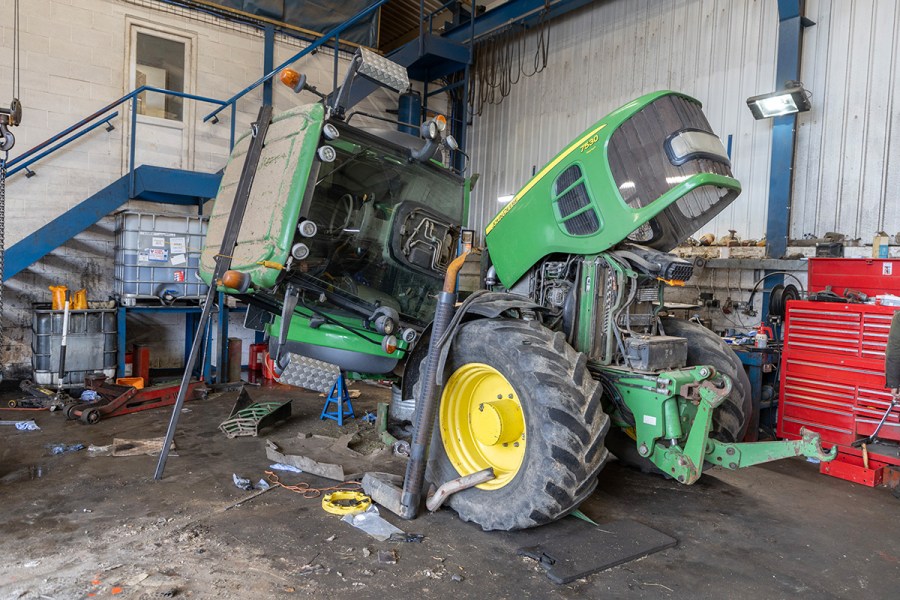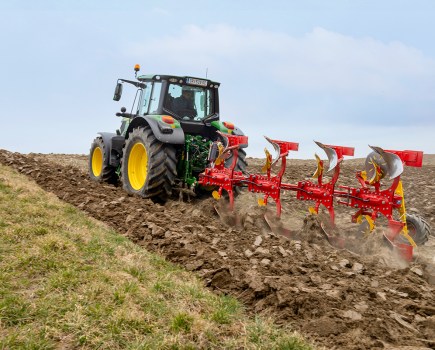One Devon contracting business has invested in Jaltest diagnostic equipment to help with fault-finding and repairs across its extensive machinery fleet. The aim? To reduce downtime, lower repair bills and improve machine availability.
KEEPING IT BRIEF
- Diagnostics kit reduces downtime
- Reconditioned alternators kept on the shelf
- Ball and spoon hitches favoured for safety
Breakdowns. You never know when they’re going to happen, or how long they’ll take to diagnose and repair. The only certainty is that they go hand-in-hand with running tractors and machinery. With modern kit having more ECU’s and sensors than ever before, those breakdowns are now far more likely to be electrical, than mechanical.
Having the ability to plug-in and assess what’s going on is no longer the preserve of the main dealer, as contractors and large farming businesses are looking towards diagnostic equipment to reduce downtime and improve machine availability.
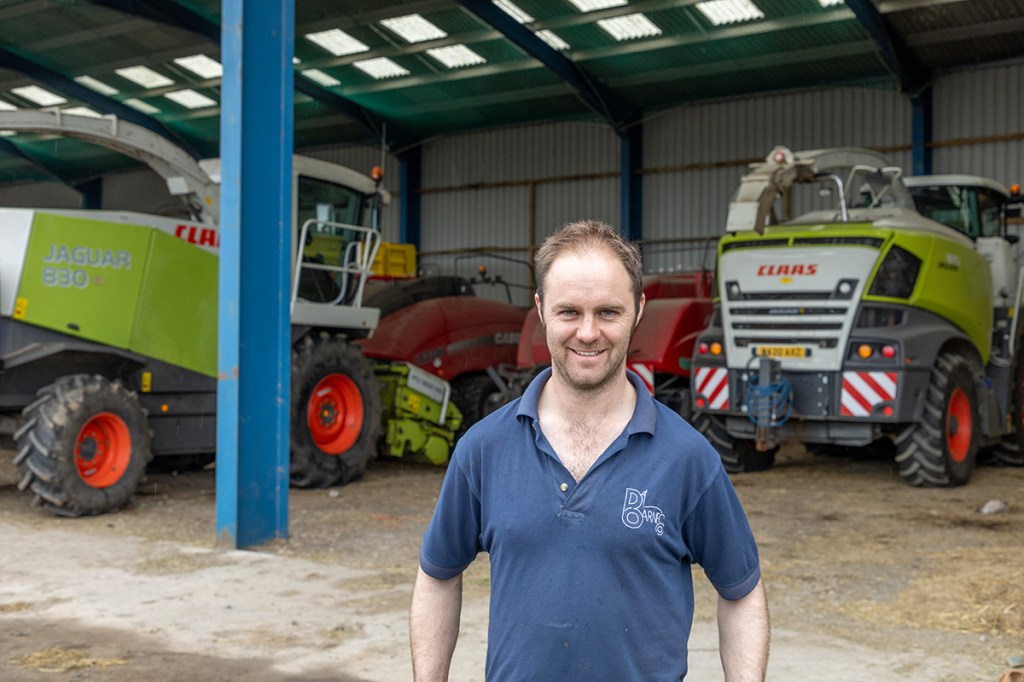
For Devon-based Barnes Contracting run by brothers Bobby, Michael and Richard, with their parents Andy and Sue, their investment in Jaltest diagnostic equipment has been a game changer when it comes to keeping wheels turning.
“We took the decision to buy into workshop diagnostics about three years ago, and it’s one of the best investments we’ve made,” explains Bobby Barnes. “When you’ve got a tractor that’s stopped with a fault, and you’ve got to wait for a call-out, that can be very frustrating for us and our customers. It can often be the silliest and simplest of things that can take a tractor out of action. And with more emissions paraphernalia on tractors, we really do need to see sensors.”
Sounds expensive
At a cost of less than £10,000, and an annual software licence fee of around £600, Bobby and his team can plug in to any of their tractors and self-propelled machines to diagnose and fault-find, without having to rely on local dealers.
“So many things need calibrating after being fixed, and unless you’ve got the right diagnostic equipment at your fingertips, you’re relying on the dealer to get you going again,” he says.

The tipping point came with its John Deere 7530 Premium, which needed a replacement head gasket.
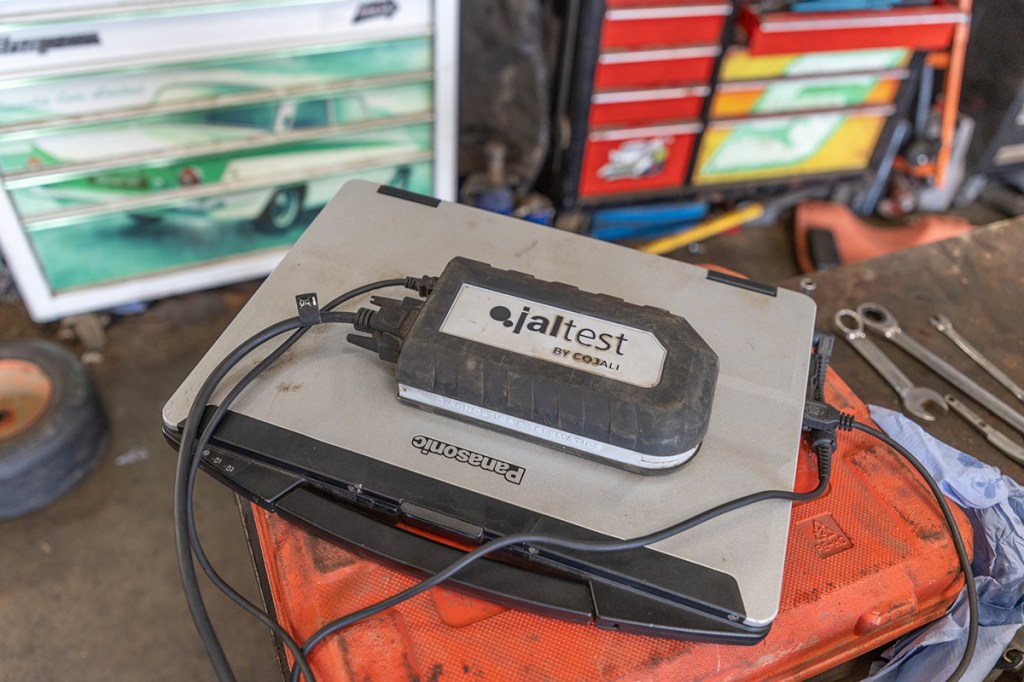
“As part of the overhaul, we sent the injectors off for testing, and ended up replacing them with new,” he says. “But they needed coding before the tractor would start, so we decided to buy the Jaltest kit. It lets us do the work ourselves. With such a diverse fleet, it wasn’t hard to justify the cost of the diagnostic kit for our own use.”
While the firm has a good relationship with its local dealers – it still relies on them for genuine parts supply – the term local is used loosely.
“We do buy genuine parts for transmissions and oily bits through the main dealers, which can be marginally more expensive than aftermarket parts,” he says. “Our location means we’ve no dealer on the doorstep, so we lack convenience and we’re at least 45 from our nearest Masons Kings depot and an hour from the nearest Hunts Forest dealership.
“Aside from the cost of a call out and labour rates in excess of £100/hour, the time it takes for technicians to respond often means we lose a lot of time just waiting,” explains Bobby. “And if they’re already out on a job and we’re next on the list, downtime could easily run into many hours.
“Those dealers we work with are extremely helpful, but it had been getting harder and harder to manage downtime when you’re waiting for someone to come and fix your kit,” points out the hands on contractor. “When you’re flat-out mid-season, it’s a pain in the backside, along with the cost of call outs. It means simple repairs can bring eye-watering bills.”
Mix of makes
Based at Stopgate Farm, the Barnes team operates an extensive fleet of prime movers. Alongside a fleet of 10 John Deere tractors ranging from a two-year old 6R185 to a 2001 model 6910S are three Bateman self-propelled sprayers, two Claas Jaguar foragers, five JCB telehandlers, one JCB loading shovel and two New Holland combines.
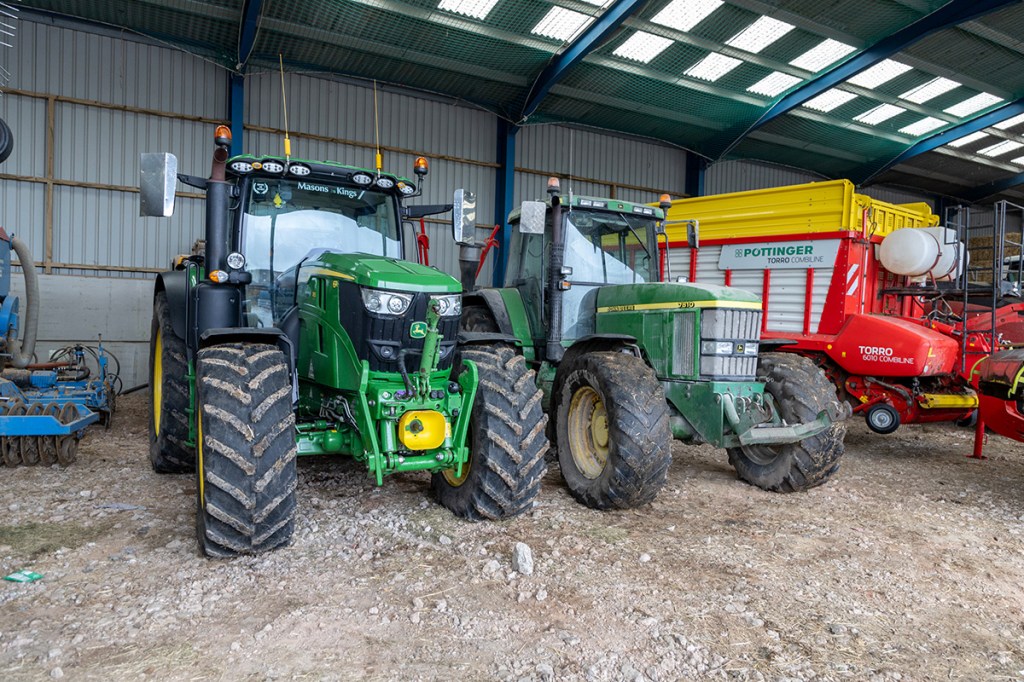
Most of the kit has been bought second hand, after the first owner has shouldered some heavy depreciation. As a result, warranties can be thin on the ground, though it’s not a deal breaker for Bobby and the team, and nothing in the current fleet is covered by warranty.
“We’ve only sold four tractors in the last 15 years, as we’ve been gradually growing the fleet and building the business,” says Bobby. “And those early tractors were only sold for more powerful models so we could do more jobs.”
“We won’t just swap a tractor for another identical model even if things start to go wrong – in our experience, it costs more to sell and replace than it does to repair. Newer purchases have to bring something different to the business, not just a more comfortable seat.”
Six R-series are joined by two 30-series Deeres and a pair of 10-series JDs, and all tractors have 50km/hr transmissions and 650 tyres. Greenstar with auto-steer gives a level of precision that operators say is easy to use, and customers get the benefit of enhanced efficiency.
Tractor power is headed up by a 2019-plate Deere 6215R with just 6,000 hours under its belt. Equipped with front linkage and pto, it handles a triple mower outfit using a Claas front and Krone butterfly with groupers at the rear.
There are three other Deeres with front linkage and pto, allowing the business to continue using its triple mower should the 6215 be out of action.
“We’ve found the 30-series tractors to be just as capable as the R-series,” he says. “It’s just an older style tractor, but there’s little difference when it comes to operating, fuel efficiency and productivity. You still get front axle suspension and cab suspension, plus a 50k transmission and auto-steering capability.”
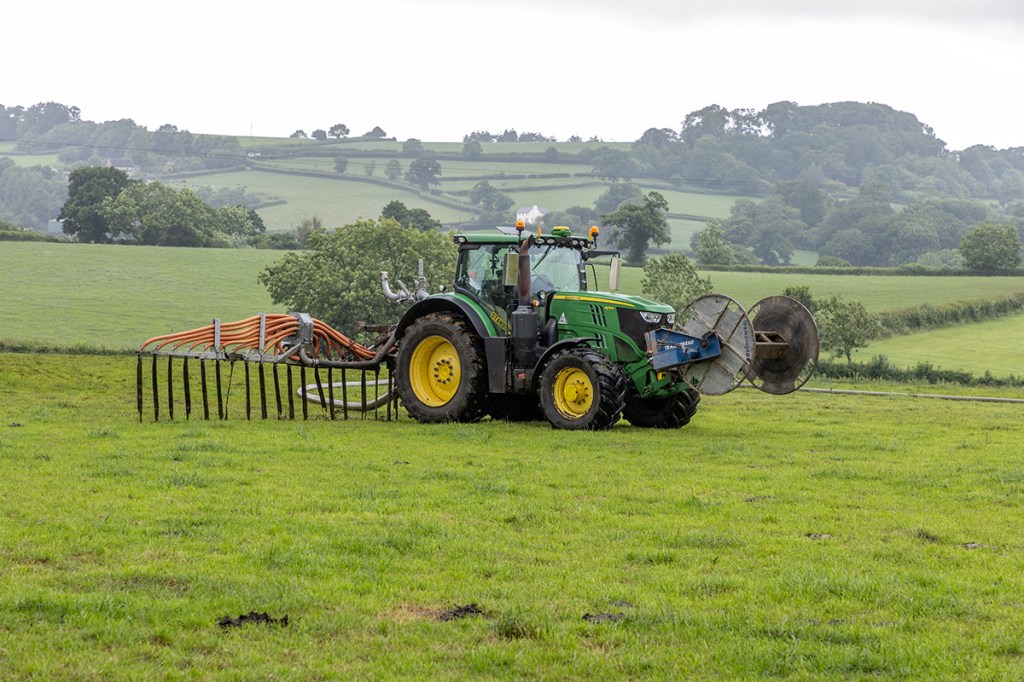
Safety in numbers
Silage accounts for a large chunk of the business, with 1,450ha of grass chopped, along with 400ha of maize. A five-year old Jag 970 leads the chopping, with a 22-year old Jag 830 available as a back-up machine, giving Bobby extra capacity to keep expanding the precision chop service. When the 970 is kitted out for maize, the 830 is also called upon to pick up late season grass.
“We’ve recently bought a second Claas Liner four rotor rake to replace a Kuhn merger that proved challenging with running costs, though we do like the idea of lifting grass rather than raking, to prevent stones going through the foragers,” he says. “We just needed far more dependability from the merger, so it had to be replaced by something that we know works well.”
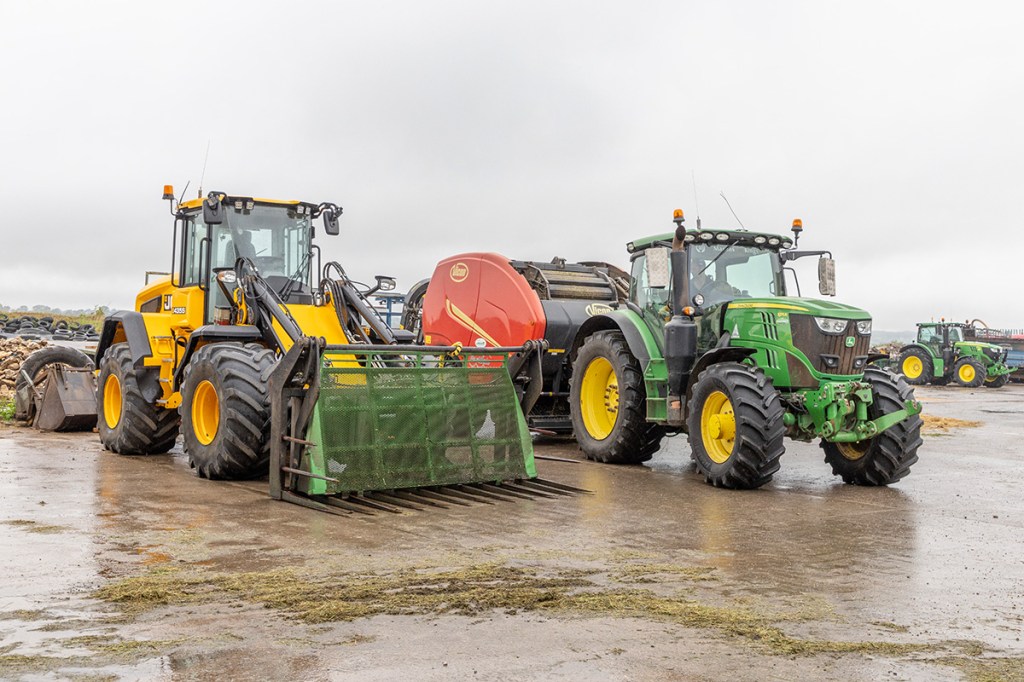
A JCB 435S packs grass into the clamps, with a choice of two different width of push-off fork, giving flexibility to suit the variation in clamp sizes found in the area. In addition, the firm operates two Pottinger Torro Combiline wagons, which collectively scoop up a further 1,600ha of grass.
Balers include six- and four-string square options, with a McHale 998 on wrapping duties. And new for the 2025 season is a second hand Vicon FastBale, putting Barnes Contracting into the round baler market for the first time.
“We’d been thinking about round baling, and the chance to buy the FastBale from a contractor who was packing up was our opportunity to expand,” he says. “As a non-stop machine, it’s a great system – one operator to bale and wrap, without stopping – and it came with customers too.”
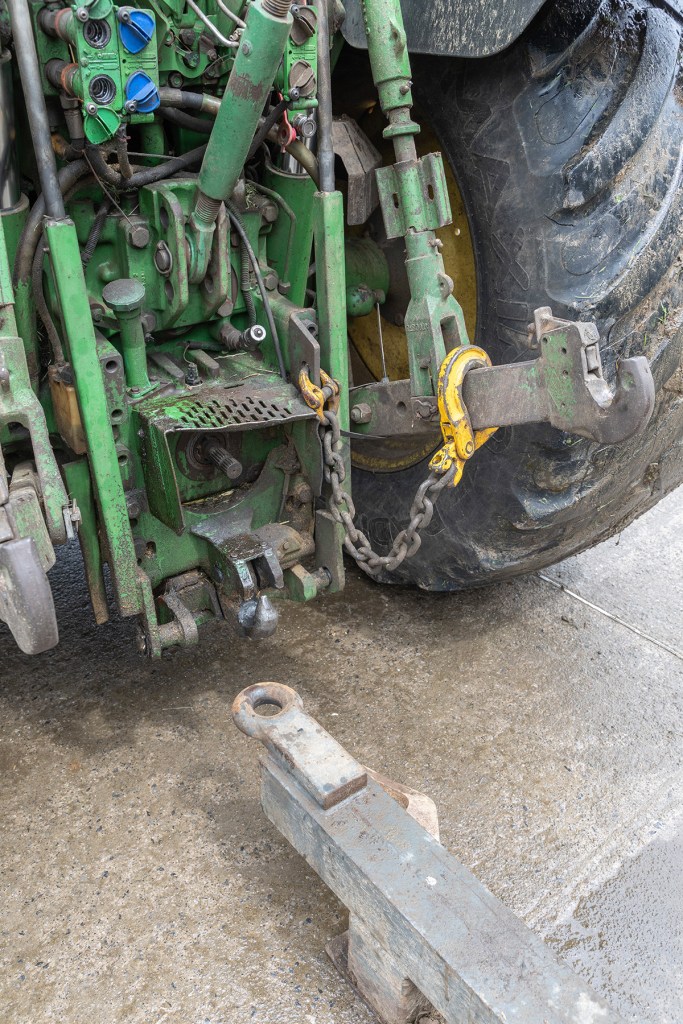
Arable too
With livestock and dairy dominating the locality, maize and cereal crops are a key part of the rotation for many of the Barnes customers. It sees the firm providing cultivation and drilling options too, using a 4.0m Lemken power harrow drill combination, 4.0m Claydon and a 6.0m Väderstad Rapid. An eight-row Väderstad Tempo handles the bulk of maize drilling, with a strip-till maize drilling service currently increasing in popularity thanks to a Concept rotavator carrying a six-row Kverneland Optima precision drill.
“I really like the strip-till maize,” he says. “This leaves a firm, grass-covered surface either side of each row which makes harvesting a cleaner and easier task.”
Spraying trio
Alongside contracting, Michael Barnes runs the CE-certified fabrication and engineering aspect of the business, designing and producing farm buildings, while Richard Barnes looks after the arable workload and a fleet of three self-propelled sprayers.
“We’re in an area that is predominantly grass, with customers growing a few acres of arable crops here and there, so we’re able to support them with a full range of arable machinery,” he says. “It’s why we run three self-propelled sprayers and a pair of five- and six-walker combines.”
Liquid fertiliser applications are proving as popular as pesticide treatments, as two RB35s with 36m booms and a 24m RB26 cover thousands of acres each year applying liquid fertiliser after each cut of grass.
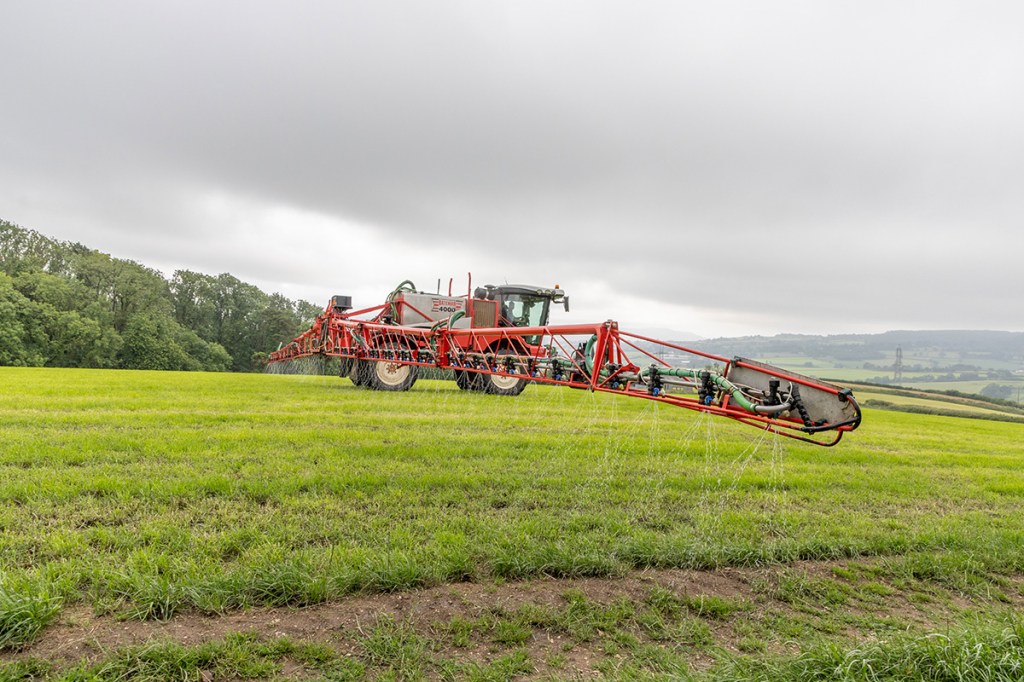
“We’ve developed a liquid fertiliser service that is more cost-effective and more accurate than putting bagged fertiliser on silage grounds,” he says. “We’re using auto steering and auto section control to deliver precision for customers, as soon as the grass comes off.”
With such an intense workload, Mr Barnes says it has become more important than ever to deliver a good service, on-time, for customers.
Back to repairs
“It is why we’ve put more effort into fault-finding and repairing our own kit, so we can be far more reliable as a business,” he says.
With a range of connectors and adapters, the Jaltest kit can be used to interrogate any of the firm’s kit. It also includes repair procedures, but stops short of allowing ECU’s to be reprogrammed.
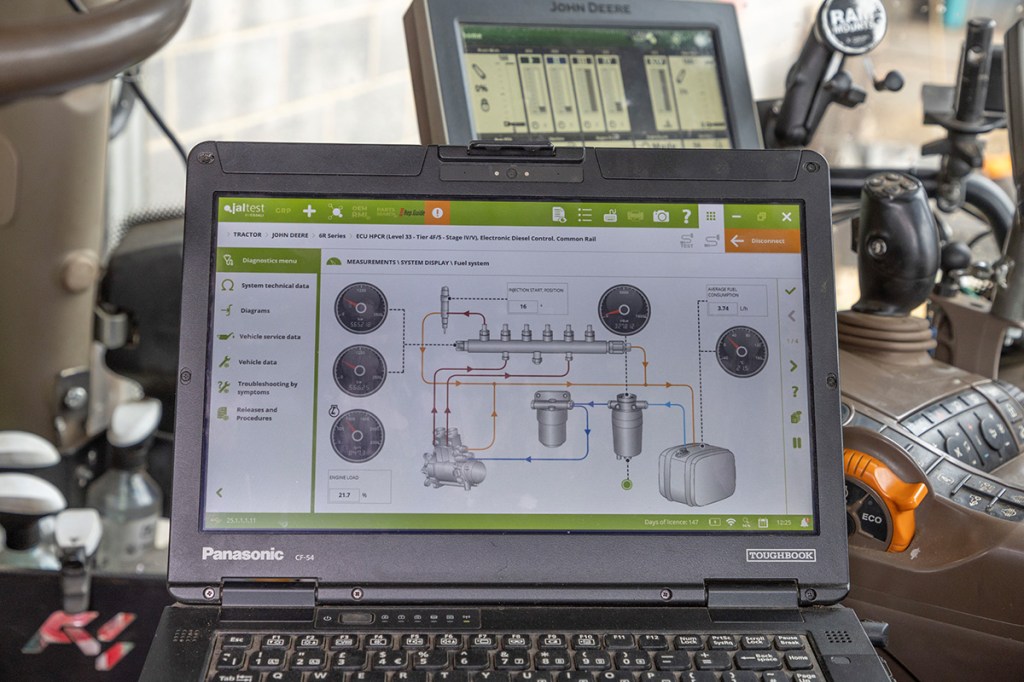

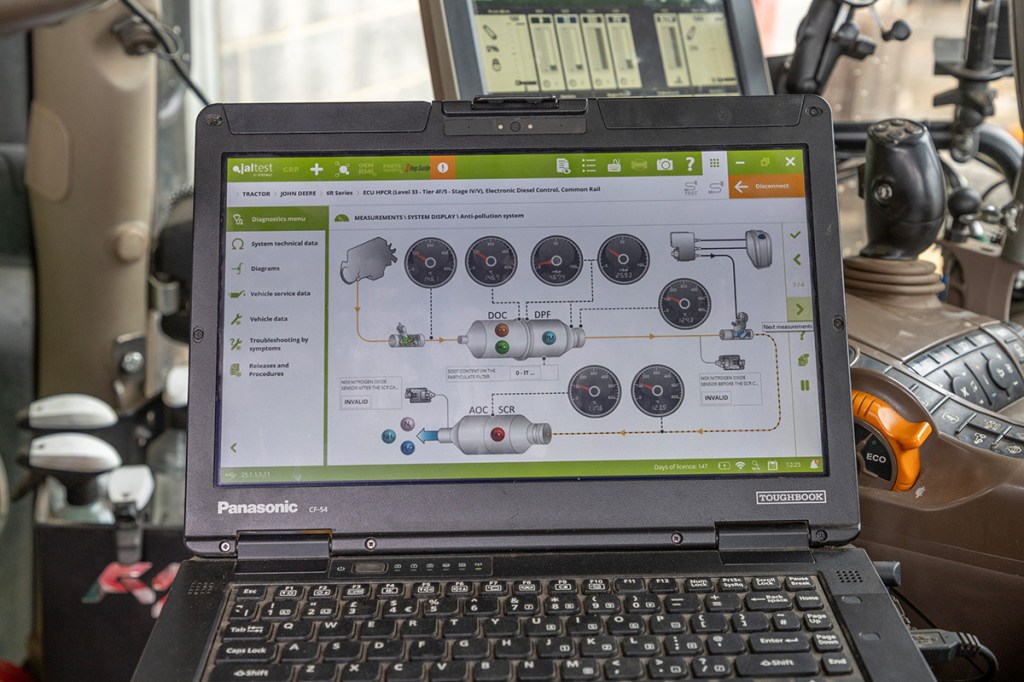
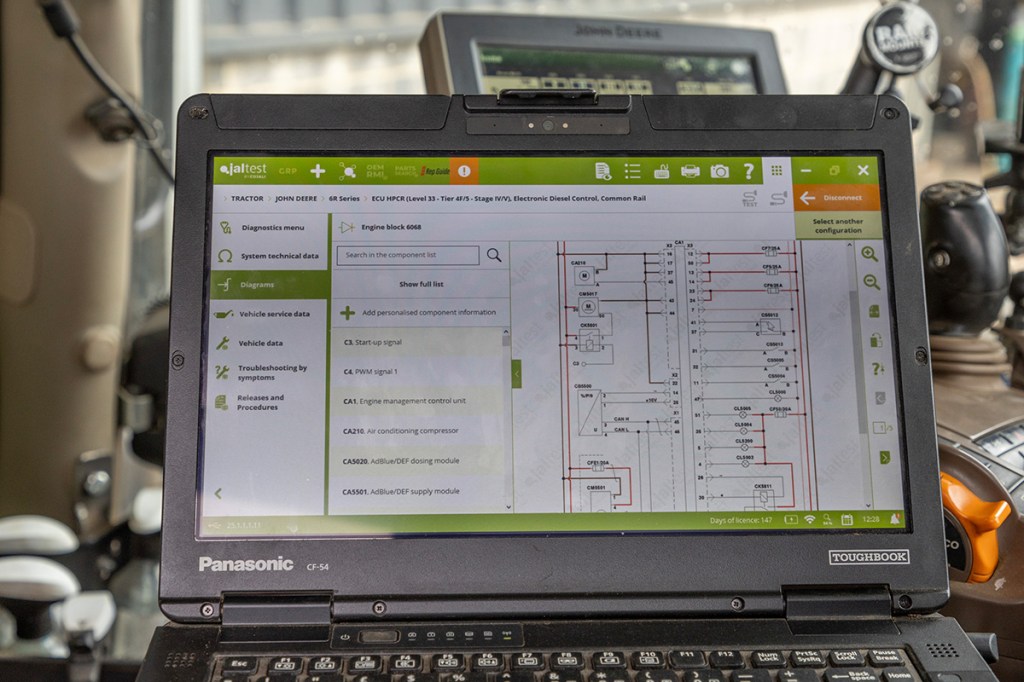

“If an ECU or a control terminal needs reprogramming, it’s a dealer task,” he says. “For everything else, we can get stuck in.”
Typical sensor-related issues include the full gamut of emissions kit including NOx sensors, forced regens for DPF’s and restoring de-rated power, plus potentiometers for cab suspension systems and link arm position.
“The convenience of electronics is great from an operator’s point of view compared to pulling levers, but it’s often these things that bring a tractor to a stop,” he adds. “We’re currently finding problems with R-series tractors that our dealers have never heard of, simply because of the workload we’re covering.”
He says the Jaltest software also provides wiring diagrams, torque settings and information, but it lacks workshop-style procedures for more mechanical tasks.
“We’ve bought workshop manuals to support what we do, and with the combination of a couple of very good and competent mechanics, we’ll tear into anything – even an AutoPowr transmission,” he adds. “We’ve replaced a transmission pump on one of our 6175s and used the Jaltest kit to calibrate clutch pack fill times and calibration. It’s essential.”
Keeping chill
The latest workshop acquisition has been an air-conditioning service kit, to save on the cost of draining and refilling through specialists.
”We’ve so many cabbed machines that last year, we spent around £6,000 on servicing and repairing a/c systems,” he says. “Every time a cab comes off a tractor, the a/c also needs to be drained and refilled – the costs all add up.”
Half the tractor fleet has over 10,000 hours on their clocks, and the use of the Jaltest kit has given Bobby the confidence to run machinery for much longer.
“I don’t understand why a lot of tractors are traded-in at 5-6,000 hours,” he says. “Tractors represent a big investment these days, but many don’t seem to get the value out of what they have and take a big hit on part-exchange prices for the security of new and a warranty. Mechanical reliability is pretty good, and keeping on top of servicing certainly helps. But with diagnostics and service manuals, there’s very little we cannot sort ourselves. It’s really satisfying when we get a big drama, and end up fixing it ourselves.”
With the exception of wiring diagrams, that can suffer as a result of heat cycles which can make plastics go brittle, he says everything else can now be easily rectified.
“I see no reason why we can’t run tractors to around 25,000 hours,” he says. “With on-going regular maintenance and the ability to sort out any issues, we can make the most of what we’ve got.”
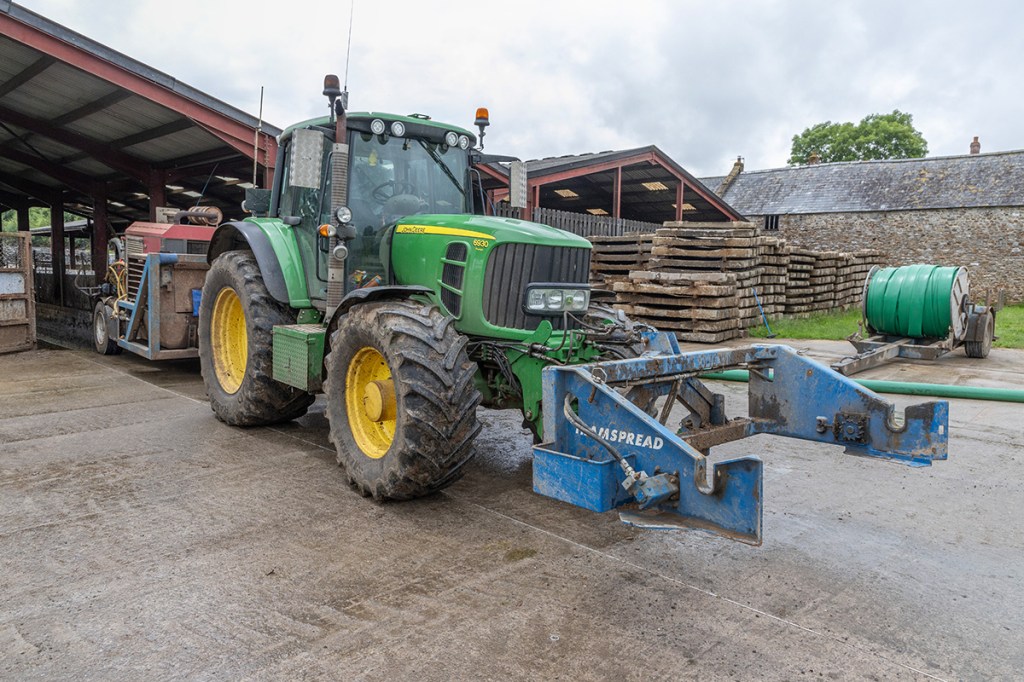

Summary
Barnes Contracting’s investment in sophisticated diagnostics equipment has enabled the business to keep a lid on its repair bills and manage downtime as if it had its own main dealership at the end of the farm drive. As machinery becomes ever-more costly and highly complicated, this forward-thinking contractor has embraced workshop technology that brings benefits to its business and its customers, by keeping wheels turning regardless of the age and hours of its machinery fleet.
Geoff Ashcroft
For more up-to-date farming news click here and subscribe now to profi and save.

